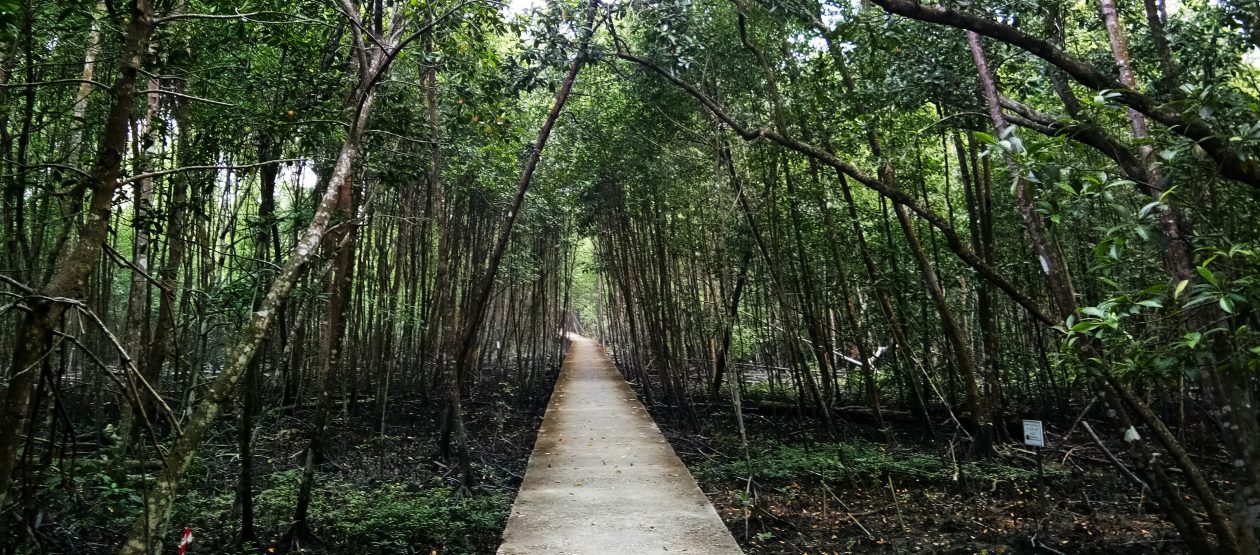CLICK BELOW FOR AUDIO GUIDE
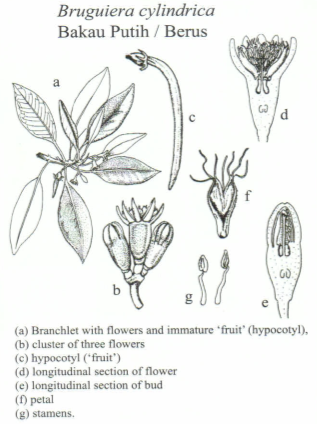
Bruguiera cylindrica, bakau putih in malay usually grows on firm clay at the seaward side of mangrove forests, usually behind the more salt tolerant species. This tree grows up to a height of 23m.
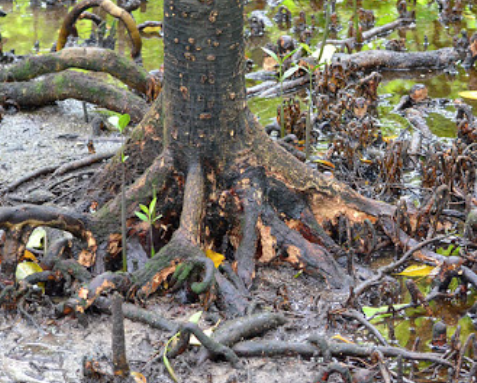
The base has short angled buttresses and the roots project above the ground to form knee roots. These knee roots have lenticels which allow gaseous exchange in the oxygen-poor and often waterlogged soil. The roots spread over a wide area to help stabilise the tree on the unstable ground. This tree relies on its roots to exclude salt from entering the plant through a process called ultrafiltration. The bark is grey with patches of sooty “rust”.
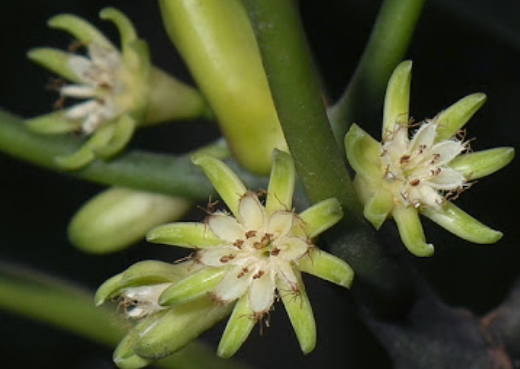
The leaves are arranged in pairs at right angles to each other. The flowers grow in groupings of 2-5, usually 3.
Vivipary is observed in this plant whereby the embryo grows and break through the seed coat and the fruit wall while still attached to the parent plant. Hence, the thin and long structures seen hanging from the trees are the seedlings, not fruits. The seeds develop as an extended root-seed up to 15cm in length. They are cylindrical, pencil-like and are usually curved, green in colour but turn brown when ripe and when ready to fall.
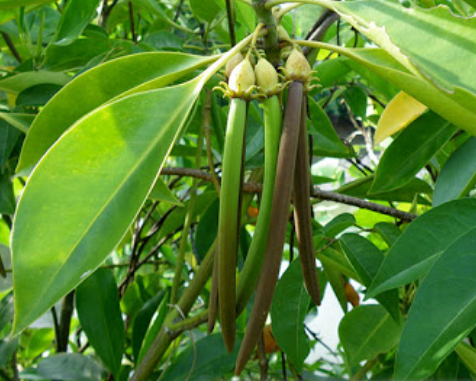
The seedling is dispersed by water. It floats horizontally for a few weeks, during which the root (lower part) will absorb water and become heavier, eventually causing the seedling to tip and float vertically. As the tide goes down, the vertically-oriented seedling will sink into the mud or other suitable substrates. Most of the seedlings, however, end up being washed ashore or eaten by animals. As the seedlings are thin and long, many of them also ended up settling directly under the parent tree, as they drop and poke into the soil below.
The wood of the Bruguiera is resistant to insects and moisture and makes excellent support and beams for Malay houses. It is also important in the charcoal industry. The wood is also known to have an odour which repels fish, and hence is not used for making fish traps.
